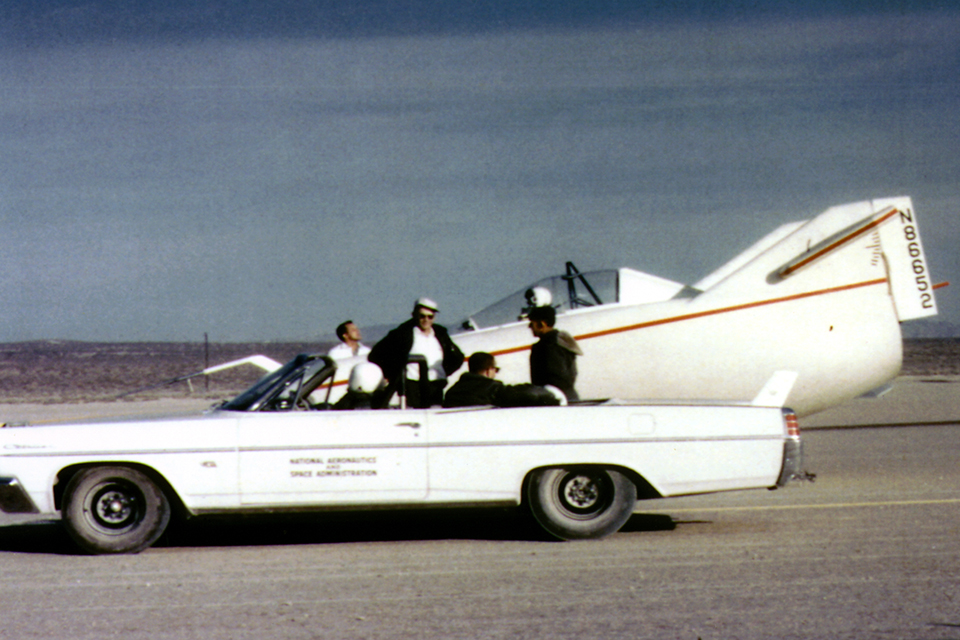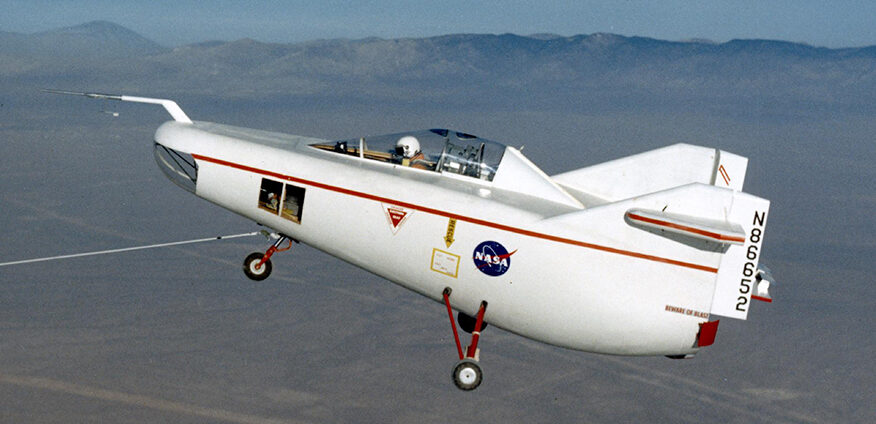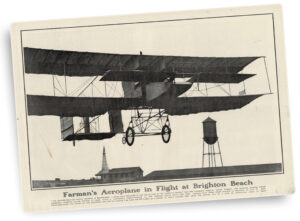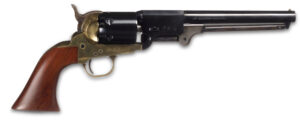What does a Pontiac convertible have to do with a space shuttle? In 1963 a souped-up Catalina ragtop was used to tow the M2-F1—the world’s first manned lifting body and arguably the shuttle’s forerunner—during initial tests of the unpowered craft in California’s high desert.
During the ’60s most NASA engineers were skeptical of the lifting body concept, whereby air flowing over the fuselage, rather than over conventional wings, would generate lift. But Dale Reed of NASA’s Flight Research Center started testing a series of tissue paper and balsa wood lifting body models in the research center’s halls and off its roof, stimulating interest in the idea. Sailplane builder Gus Briegleb was hired to construct the fuselage of what would be designated the M2-F1, affectionately known as the “Flying Bathtub.”
With NASA research pilot Milt Thompson in the cockpit, and the Pontiac roaring across the desert at speeds up to 110 mph, the first towed flight attempt came on March 1, 1963, though the M2-F1 didn’t actually make it off the ground until April 5. The lifting body’s first free flight took place on August 16, when a Douglas C-47 towed it up to 5,200 feet before Thompson released the towline. Thanks to modifications based on data from the ground-towing experiments, the vehicle handled well during its two-minute descent.

The M2-F1 and follow-on manned lifting body designs—including the M2-F2 (famously showcased during The Six Million Dollar Man TV show’s opening footage), the HL-10, X-24A, M2-F3 and X-24B—set the stage for construction of the space shuttles. Although the lifting body concept was eventually rejected for the shuttle, those earlier vehicles provided detailed information on the aerodynamics and controllability of a low liftover-drag unpowered craft, data that could be directly applied to the shuttle design.
The restored M2-F1 is on display at NASA Dryden Flight Research Center at Edwards Air Force Base in California.
Originally published in the March 2009 issue of Aviation History. To subscribe, click here.





